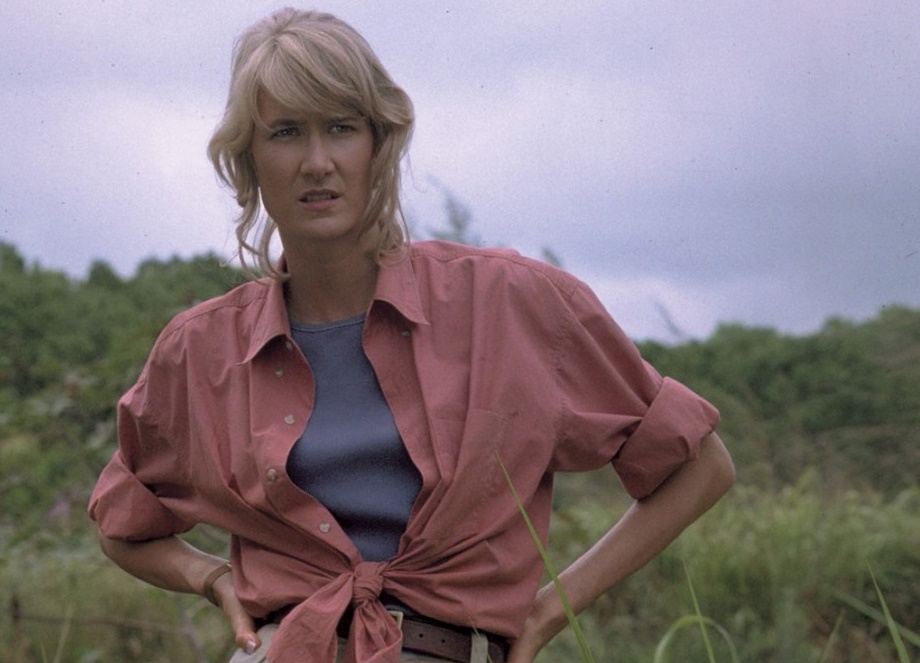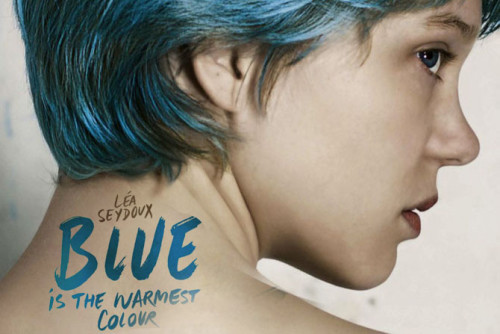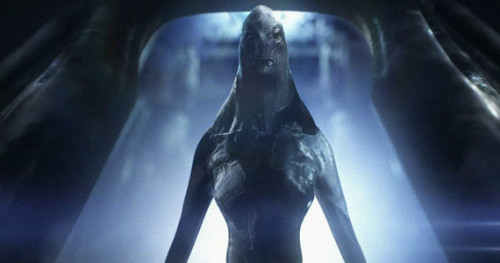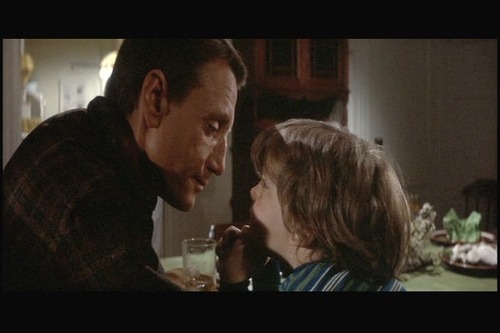This guest post written by Siobhan Denton appears as part of our theme week on Women Scientists.
Largely, Steven Spielberg is not known for overtly feminist portrayals of women in film. His work primarily focuses on similar motifs, chiefly that of father/son relationships. Yet in rewatching Jurassic Park, it struck me that not only is Laura Dern’s Dr. Ellie Sattler a portrayal of a female scientist that is largely unseen in film, but she is, on numerous occasions, keenly aware of her gender and how this leads to her treatment.
A paleobotanist, Dr. Ellie Sattler is clearly respected in her field of her work. Unlike previous female scientists, Ellie is not merely present to fulfill the Male Gaze, or to act as a plot device driving the narrative forward. Too often in film and TV, women scientists are there to either look attractive, or to simply proffer information to their male counterpart without little discussion. Here, Ellie is not only an expert in her field; she is respected by her colleagues.
Take for example the scene in which Ellie offers her ideas as to the reason the triceratops is ill.
[youtube_sc url=”https://www.youtube.com/watch?v=JylK4HuKMvQ”]
Both Ellie and Dr. Alan Grant (Sam Neill) are overcome with emotion, seeing the real life incarnation of a species to which they have spent their lives devoted to. But while Alan remains enamored, Ellie quickly acts, readily questioning the other men around her as a means to solve the reasons behind the illness of the animal. She does not act subservient or submissive. While Ian Malcolm (Jeff Goldblum) balks at the nature of Ellie’s investigations (determining the animal’s food source by inspecting its droppings), Ellie remains unfazed. Until this point, Ian has seen Ellie as a potential love interest, and while he acknowledged her education, he readily used his interactions with her to both showcase his own knowledge, and as an opportunity to educate Ellie. He attempts to highlight her intellectual failings because she, as a paleobotanist, does not have an understanding of chaos theory.
[youtube_sc url=”https://www.youtube.com/watch?v=n-mpifTiPV4″]
It is not until Ian witnesses Ellie demonstrating her own knowledge that he acknowledges that her function is not to simply act as a love interest, prompting him to remark upon her “tenacious” nature. This remark, acknowledged by Ellie’s colleague and partner Alan, is said both admiringly and begrudgingly — almost as if Ellie’s refusal to conform to the role of an archetypal love interest is both pleasing to see and frustrating.
It would have been easy for Dern’s character to have simply performed the role of love interest for the men in the film, and indeed the men in the film often try to impress upon her (and each other) that this is the role that she can perform. Ellie is aware of this, and makes this clear when Ian, again demonstrating his intellect, remarks, “God creates dinosaurs. God destroys dinosaurs. God creates man. Man destroys God. Man creates dinosaurs.” Ellie’s wry response, in which she states, “Dinosaurs eat man. Woman inherits the earth,” demonstrates her awareness of her gender and her status.
While Ellie is Grant’s partner, her narrative is not dependent on her involvement with him, and indeed, much of her narrative development takes place away from Grant. Returning to the compound while Grant is left to look after the children (arguably taking on the maternal role), Ellie is compelled to offer her help in order to reboot the system. She is aware of the dangers, but does so anyway. Her action, which she quickly undertakes with little debate, is decisive. She knows that her help is needed and despite her fears, she rapidly offers her services. Both Muldoon (Bob Peck) and Arnold (Samuel L. Jackson) accept Ellie’s participation without question. It is only John Hammond (Richard Attenborough), far older than the rest, who questions her decision. It is interesting that it is Hammond who expresses his displeasure with her involvement in the mission, largely given the noticeable generation gap between the three men in the room. Perhaps this is Spielberg’s attempt at noting the necessary progression in the treatment of women. Ellie herself explicitly draws attention to Hammond’s objections, bluntly stating, “Look … We can discuss sexism in survival situations when I get back.”
Ellie is willing to get involved and does not require rescuing, unlike her partner Alan, who spends the majority of the film both fulfilling a maternal role, but also hoping to find safety. Ellie is already safe through her decision to stay with the triceratops, but she is prepared to risk this in order to guarantee the safety of others. Ultimately, it is Ellie that rescues Alan, Lex (Ariana Richards), and Tim (Joseph Mazzello) as it is through her actions that they can retreat from danger.
Despite this, Alan does still attempt to protect Ellie, requesting that she try to reboot the system while he holds the velociraptor at bay. Ellie recognizes that Alan will not be able to hold the door on his own, so once again acts to help him, and in doing so fulfills the same role as him. As the pair hold the door together, their roles are no longer gendered. Notably, it is the other female character in the room that saves the four here. Lex’s superior technological knowledge successfully reboots the system, meaning that she, along with Ellie, has helped to save those remaining on the island.
[youtube_sc url=”https://www.youtube.com/watch?v=GFJekvpaua4″]
Importantly, Ellie is not an overtly sexualized character nor is she there to serve as simple set decoration; her clothes and styling are functional and appropriate to her job. She is allowed to be intelligent and brave without acting hysterical or panicked. The film affords her a fully developed, engaging, and interesting role.
Given that such a representation can be present in a successful film, it seems even more of a misnomer that so few female scientists are depicted on-screen. As has been noted, the original Jurassic Park is arguably more positive in its portrayal of women than the recent Jurassic World. Why this regression?
It is easy to list some of the representations of female scientists, as if the exception proves the rule, but until such representations are entirely normalized, not enough work is being done.
See also at Bitch Flicks: The Dinosaur Struggle Is Real: Let’s Talk About Claire Dearing’s Bad Rap and Childhood Nostalgia
Siobhan Denton is a teacher and writer living in Wales, UK. She holds a BA in English and an MA in Film and Television Studies. She is especially interested in depictions of female desire and transitions from youth to adulthood. She tweets at @siobhan_denton and writes at The Blue and the Dim.
























